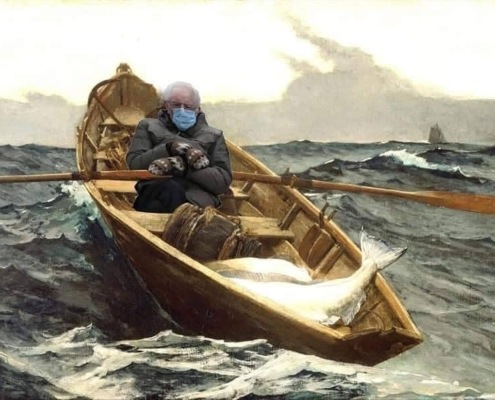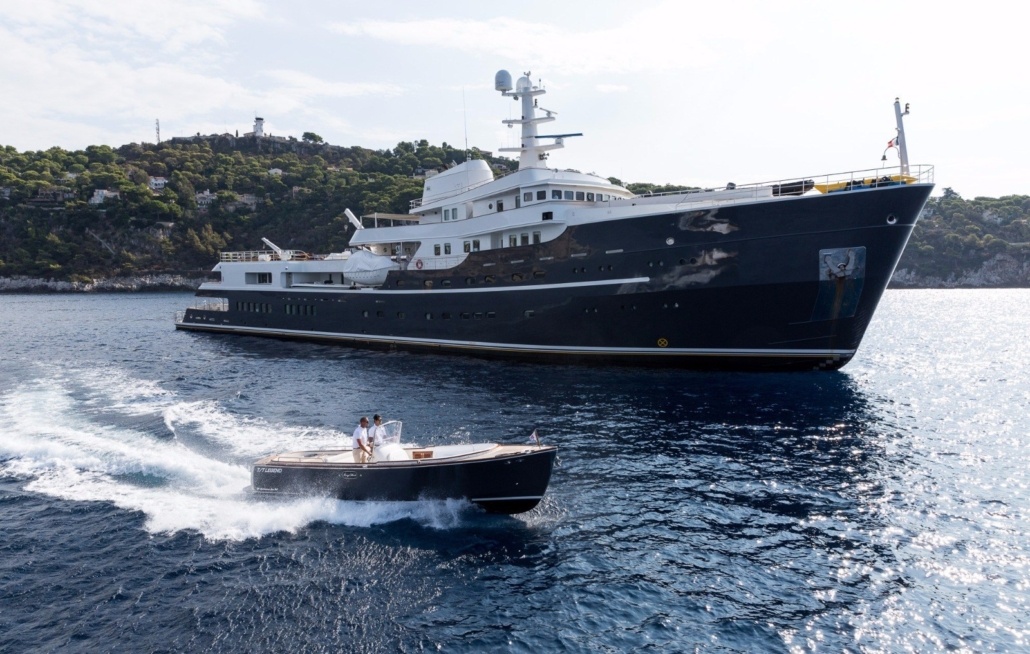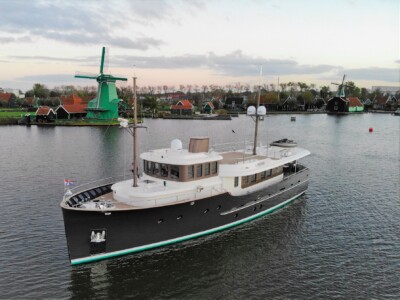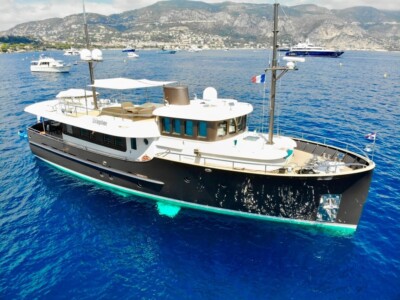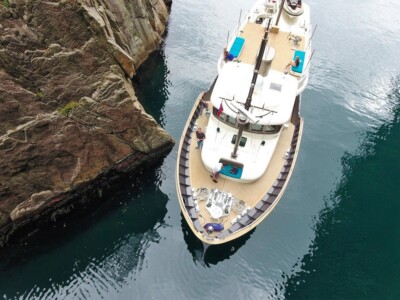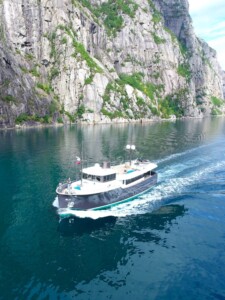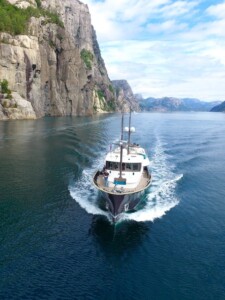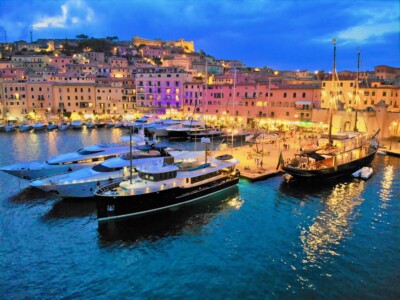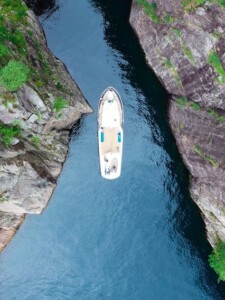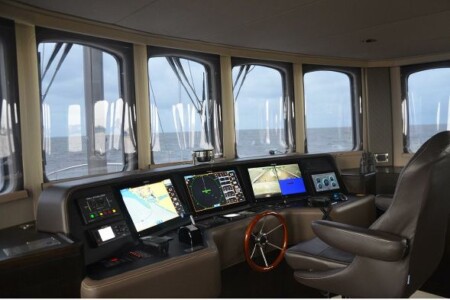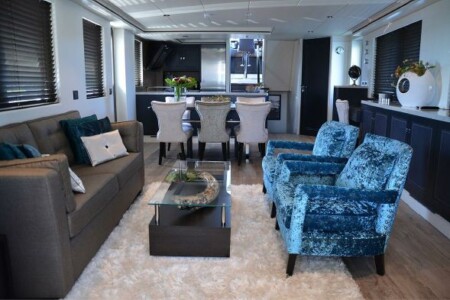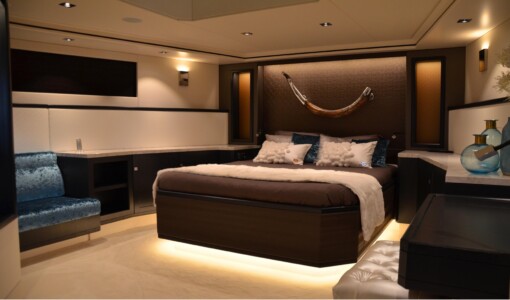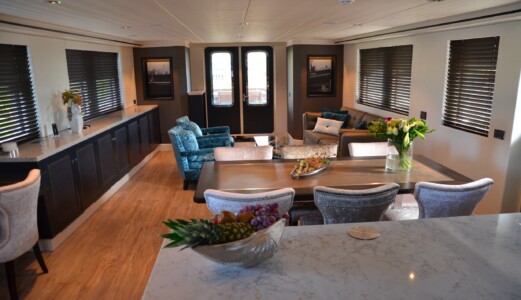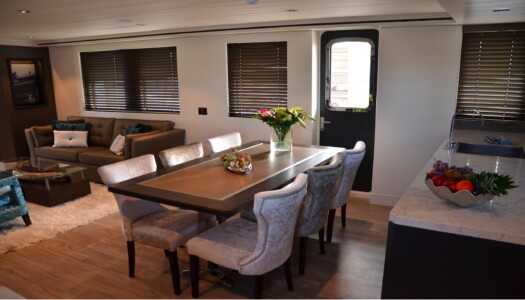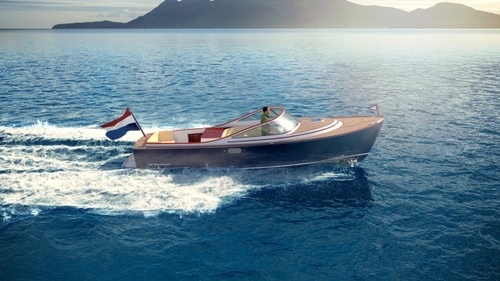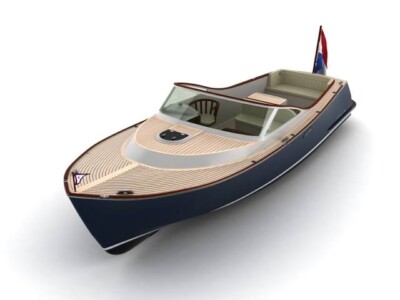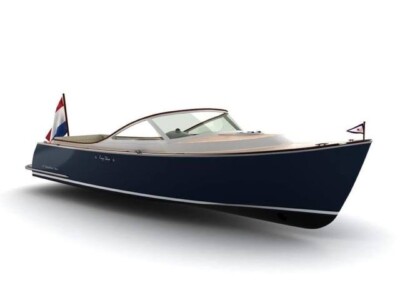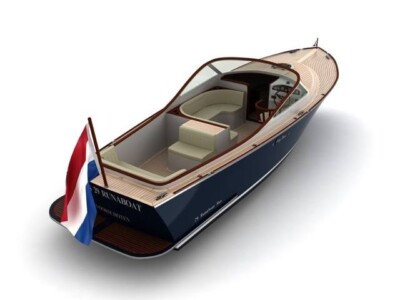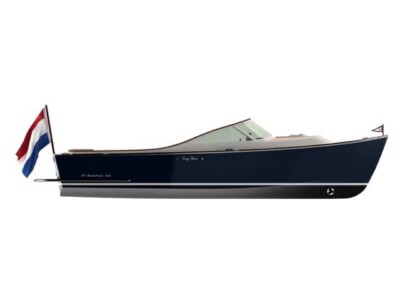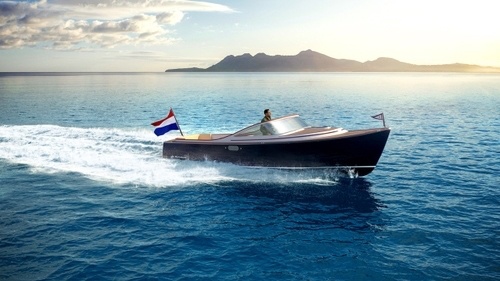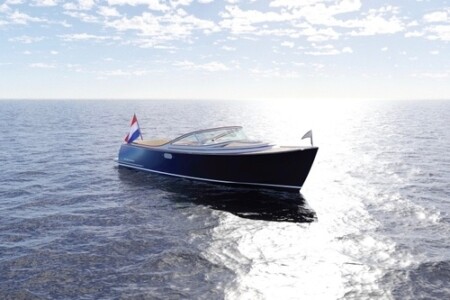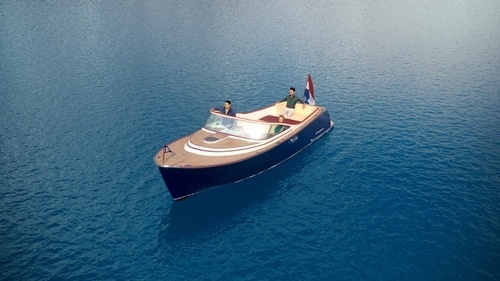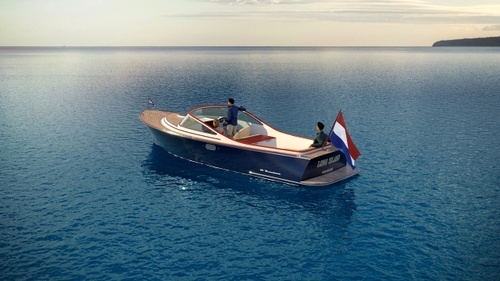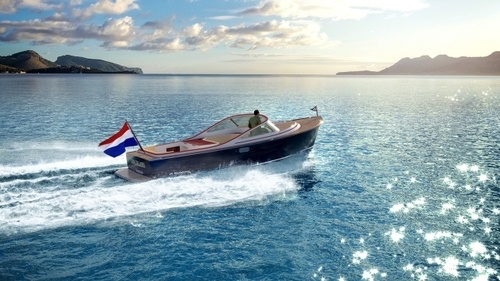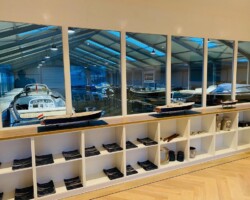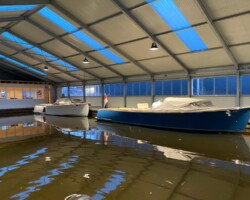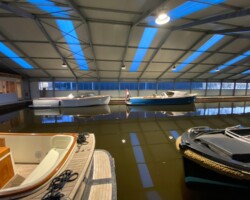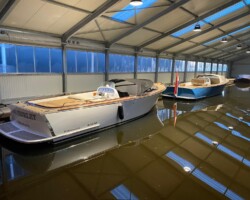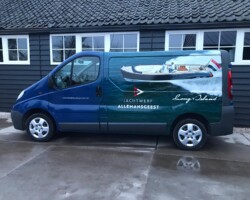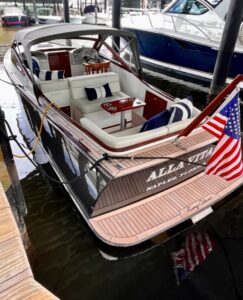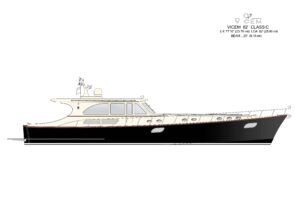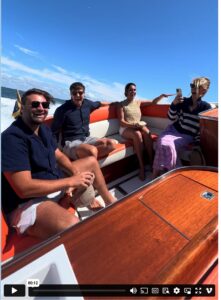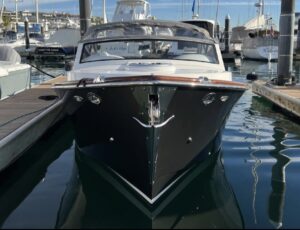
Really now? “No bad weather, just bad boats?” It’s an old Danish expression, but I heard it for the first time in Holland. Sure, it’s a little bit …. judgmental? But I’ll give the Danes this: When you boat on the North Sea, and have since the time of the Vikings, I say you’re entitled to judge all you want. Because as Dizzy Dean once famously said,
“It ain’t boasting if’n you kin do it!”
As the fish swims, it’s only 375 nautical miles miles from southern Denmark to Urk, Holland. Urk is home port of Hartman Yachts, builder of, among other things, the Livingstone 24:
I’ve done enough sailing in Denmark over the years to see a certain shared yachting culture with the Dutch. My respect for those shared values has led me to connect so well with Hartman, and with Long Island Yachts. It’s why, when bringing these lines to America, I now summarize their offerings to America this way:
“From the North Sea, to your sea!”
Which brings me today to….
I. Sold!
Keep your eyes open this summer and you’ll see a brand new Long Island Yacht 33 Classic whizzing by on Long Island Sound!
Don’t blink, because she’lll be moving fast. The owner (a race car driver and bad-ass waterskier)….

…. has the need for speed. That’s why he opted for the largest engine that fits the 33, the Yanmar 370, which will top her out at 32+ knots. As he put it to me, “Upgrading to the V8’s additional torque was a no-brainer for me.”
In regard to that performance, you’ve heard on my Tom Brady Goes Dutch podcast about the recent sea trial of a Long Island Yacht 25 Sportsman in New Jersey:
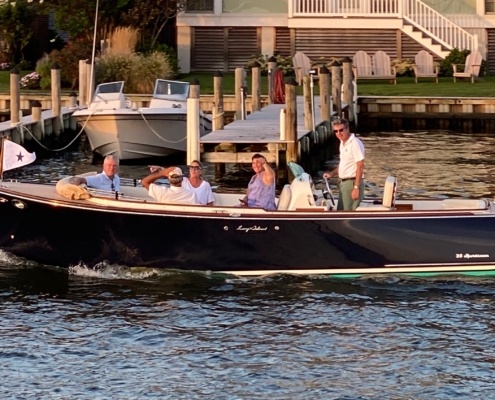
Before our sea trial her owner was glowing in his account of the boat’s handling. In particular, her solidness in a chop. So we went out on a brisk fall day, and I quickly understood his point. Zooming with the Dutch the next day, they answered for me a question that had been on my mind for awhile:
Why are Long Island Yachts heavier than the competition?
Their answer?
Because they are supposed to be!
All things being equal, we like heavy boats because,
- When you fall off a wave, that extra mass cushions the blow, and leaves your boat standing on her feet.
- When you crash into a wave, that extra mass helps crush the weight of what’s coming straight at you (at 64 pounds per cubic foot!)
- And when that 64 pounds per cubic foot of wave falls on top of you? Well, best to be pushed around as little as possible.
- Simply put, weight delivers stable and able.
The engineers at Long Island Yachts explained that the net additional weight comes from their use of solid fiberglass construction (no foam or balsa cores) below the waterline. That extra mass, down low, is the secret to their handling. And if you are a speed demon, you can make up for that extra weight with a bigger engine (or even twins).
Personally, I think this is an optimal design choice. Especially, when you run aground (see this post on Long Island Yachts’ protected underbodies) …
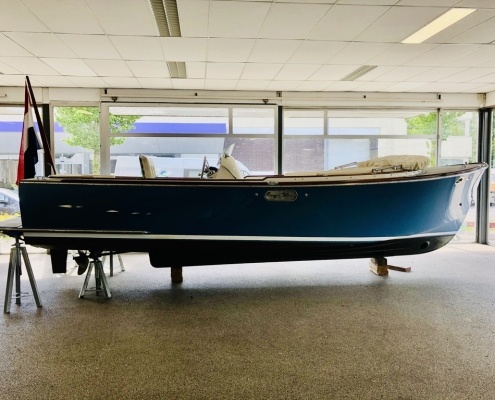
… and listen to a great story about a damage-free, high-speed nighttime grounding here. A grounding, by the way, that left the boat 50 feet up on the shoreline (no one was hurt).
For your Long Island Yacht, the next open production slots are for September delivery. But demand is high so please call for your availability update.
II. Next up…
With one hundred of these small luxury yachts having splashed since 2006, the 33 Classic is a perennial best seller. But my innovative friends wanted to tweak the design a little, presenting a more curvaceous look in a slightly smaller design. So they brought some rough plans of a 29 Classic to the Dusseldorf Boat Show last year to gauge client interest. It must have been high, because they’ve already sold five from the plans alone! Hull #1 will finish in a couple of months, and I will have a full report for you. Meanwhile, here are some CGI’s to tide you over:
Long Island Yachts commitment to growing their USA fleet has led them to move into their new and larger factory in Holland this week. I look forward to seeing it myself this spring, and I welcome you to come over with me. In fact, let’s sea trial the entire line together…
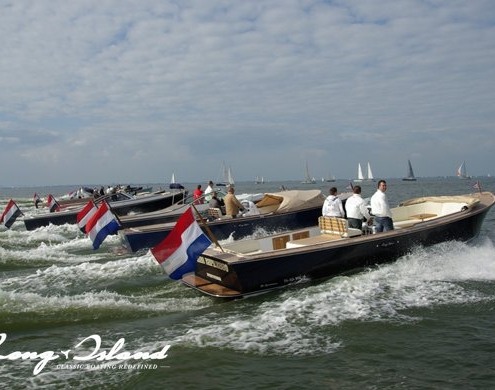
Here is a little of what you can expect at the factory:
III. Hardtop and Other Options
Something else you can expect from Long Island Yachts is some new Hardtop builds. This option is now available for the 29/33 Classic models:
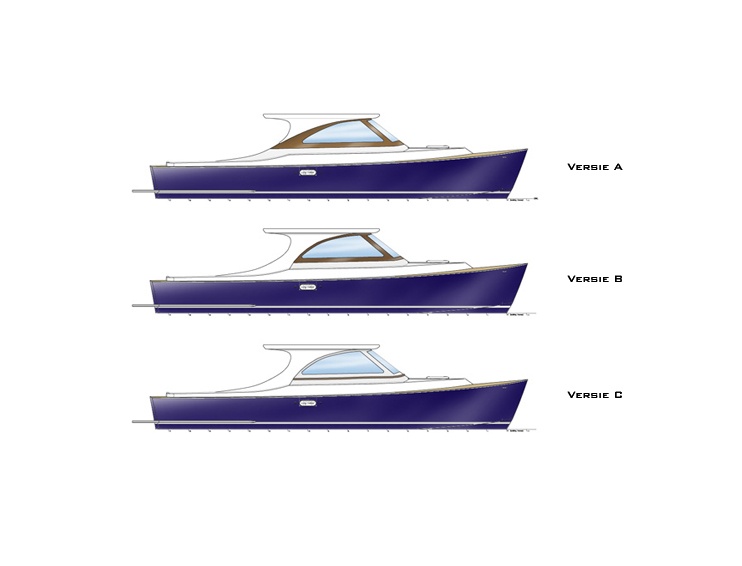
And, so impressively, for the 40 Classic:

I’ll take this opportunity to say that the pricing on the hard top option is quite reasonable.
Actually, the options pricing across the entire LIY line is unusually reasonable for our industry. I always take it a little personally when builders pump up their options pricing ($30,000 for a generator? Really? Do they thing my clients won’t notice?). So hat’s off to Long Island Yachts (the rare builder for whom teak decks and bow thrusters are standard equipment) for keeping their little luxury yachts affordable. Your cost for the generator option on the 40 Classic, you might ask? An eminently reasonable $14, 300. That’s what I’m talking about…
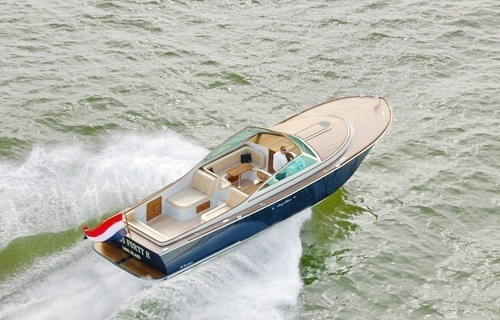
IV. What to Build, and for Whom?
I’m gonna take a deep dive into the belly of the beast today, loyal clients, and talk about how builders decide what to build, and for whom. Some of it will be a bit arcane, some of it a little obvious, and some of it (sorry) will come close to boring. But stick with me here, because I think it can add real value to your decision making process.
It starts with yet another restatement of The Fog Warning’s core mission, it’s dedication to answering these questions:
What makes a yacht great, and why? Who makes a great yacht, and how?
And for today’s discussion I will add this little postscript:
… and how not to!
Obviously, building a great yacht takes a great team. It starts with the builder, of course – the owner or the CEO. But then add:
- The designers;
- The bean counters;
- The naval architects;
- The parts suppliers;
- The subcontractors;
- The service teams (a huge resource when designing and building the yacht in the first place); and,
- The marketers.
Team assembled? Now the first critical decision:
Exactly what are we going to build, and for whom?
Here’s an illustrative but hypothetical story about the range of possible answers.
Let’s say sales have slowed at a storied builder of big boats. The reasons could be all over the place, but for the purposes of this discussion let’s say:
- Maybe their designs have gotten stale.
- Or, they haven’t kept up with the competition.
- Or, changing trends in the industry (outboards, anyone?) just passed them by.
- Or, human nature took its course and leadership got too comfortable for too long (when I call the owner or CEO I’m delighted to catch them out on their own boats, using and testing their own products. Catching them out on the golf course ….. um, not so much).
And now their CFO (or maybe the smartest member of their Board of Directors) notices that 18 to 24 months out their cashflow is looking a little shaky.
No need to panic! The solution is well known and well used, practically shouting itself from the rooftops of every boatyard in the world:
“We need a new model!”
Okayyyyy, but what should we build? Keep in mind that tooling costs for a 60 foot yacht are huge. The molds alone for fiberglass construction can run over $2,000,000.
As a brief aside, these tooling cost are one reason I love well-built aluminum and cold molded yachts. Without having to make a huge investment in molds (trust me, you have sell a small fleet of yachts to make that investment back) all of that value stays in the boat! It stays in as design enhancements, higher-end components, and higher levels of performance and finish. Vanquish Yachts, for example:
… is coming on strong is America with their new, hot aluminum luxury day boats, with at least 20 deliveries here in the last year or so.
But any way you cut it, it’s a big decision. Margins are low, capital costs are high, and not many builders can survive a $2,000,000 mistake. Which leads to question #2:
Do we build down to a price, or build up to the best possible yacht?
Stated another way:
Do we build a yacht generally good enough to meet the needs of the largest pool of potential owners, or do we build a great and more expensive yacht for a far smaller but far more discerning class of owners?
Biz-wise, neither answer is wrong. Both can succeed. But only one answer consistently and dependably produces a great yacht. Which, as my loyal clients know, is The Fog Warning’s whole raison d’être.
But let’s stick with Track One first, “build down to a price.” And since copying is cheaper than innovating, the project usually moves on to this question:
Who’s doing well, and what marketshare can we grab from them?
It’s a comparatively low-risk play. Why not leverage your competition’s expenditures on costly R & D and marketing? Well, there’s one obvious “not.” Walk through the Fort Lauderdale Boat Show’s lineup of 4,000 largely look-alike, perform alike offerings, and you’ll get what I mean.
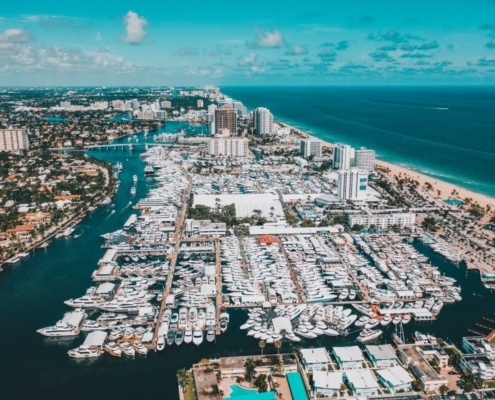
But even copying is hard, biz-wise. If competitor X’s yacht is selling well at $2,150,000, the obvious approach for a builder becomes “Let’s move into that space, do it just differently enough to distinguish ourselves a little, but use our smarts to do it more efficiently, say for….. $1,999,000. We’ll clean up!”
Sometimes they do. But that doesn’t mean they produce a great yacht.
And let’s be clear – saving that $150,000 is nowhere as easy as you might think, because:
- The basic material costs of yacht construction are roughly the same, planet-wide.
- Even if you can squeeze out some cost advantage on these basic materials, the cost of the hull and deck itself is no more than 25% of the overall build.
- The core components (engines, electrical, plumbing) are all sourced from the same suppliers, at the same cost unless you are pumping out a thousand boats a year (hello, Azimut!).
- Basic labor rates don’t vary by county. No matter where you build in China, your base labor rate will be $4.85 an hour. Taiwan? $5.20. Turkey? $4.95. The US or EU? $22. Once you’ve built an elaborate factory, there is no easy way to reduce labor costs. Even robotics (except for making the molds) are not all that applicable to yacht construction.
So, cheaper is harder.
And doing it better and cheaper is way harder.
Which leaves the Goldilocks middle path: More-or-less match your competition’s costs, price point and quality. Then pressure your world-class brokers and cracker jack marketers (who these days are way closer to data scientists than traditional marketers) to leverage the great value of your brand name.
It works. Does it deliver a great yacht? Sometimes. Not often enough.
More often it takes Track Two: Building the best yachts for the most discerning owners. It’s still a really hard path (after all, if it were easy, everyone would do it). But the best builders in the world continue to produce the best yachts, year in and year out. How do they do it? What skills do they bring to bear?
What I’ve seen is this: They use the best installed option available to species Homo Sapiens:
A world class set of ears!
I mean ears (as is said of great jazz musicians) that can hear paint dry.
The builders who turn those ears unwaveringly towards their current and past owners, they get to grab the gold ring. After all, who better can identify what’s missing from their boats, and from their yachting lives, than the owner’s themselves? That kind of market knowledge is invaluable, and all it takes is Pee-Wee Herman-sized ears.
It’s not rocket science, but it’s not done as often as you think, or as well as it should. The boat biz can be very much an ego-driven dynamic, rife with the “I know best” syndrome. Trust me, nobody in this biz knows everything. So nothing beats a goods set of ears.
What else works? Builders who:
- Are emotionally and intellectually wired for innovation;
- Who prioritize a direct connection to a yachting life – They use their yachts just as their owner’s do. A lot;
- They work hard at staying small. With great product that takes discipline (you have to be good at saying no). It’s hard for big conglomerates to build great yachts;
- Their pockets are deep enough to avoid chasing the latest trend; to weather downturns (in fact, downturns are exactly when you should be working on new models); to provide great service to their owners; to operate without significant debt but with great partners; to take as much pride in the quality of their yachts as the quality of their balance sheet; and,
- Most of all, they have the skills, confidence and integrity to…
Say what they build, and build what they say!
By this I mean they define right up front the core functionality they want to bring to their yachts. And they stay true to that from first drawing to first splash.
Builders with integrity build yachts of integrity. They don’t dwell on labels or depend on slick marketing. What they depend on is the good judgement of knowledgeable yachtsmen and women who know what they are looking for and what they are looking at.
God, I love this business.
V. Explorer Yachts, Expedition Yachts, and other Assorted Labels
Which brings me, finally, to our last chapter today: Explorer and Expedition yachts (whether mini, maxi, or pocket). And I’m going to apologize in advance for being a little strident here. But in this sector the dollar costs can be as high as the physical risks. If you’ve been following the damage done to the Vendee Globe racers this winter, you know that some 10,000 shipping containers a year get jettisoned at sea. Any one of them can sink an under-built ship:
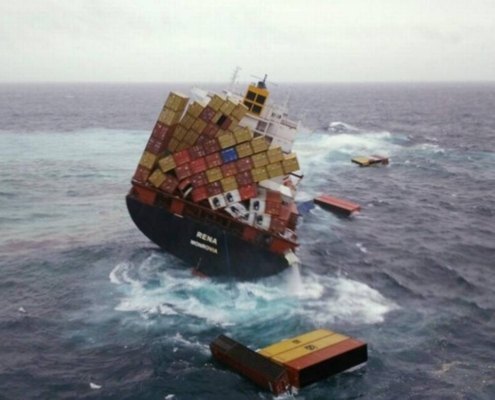
But no nautical authority – not Lloyds of London, nor MCA, nor anyone else – has technically defined what constitutes an Explorer or Expedition yacht. Unless and until you get up into Ice-Class classifications, any builder can call anything that floats anything they want. And since this has been a very hot build class over the last five years, builders everywhere have rushed in with their own offerings, definitions and labels. The build space is now occupied by at least 18 builders around the world, and five times that many designers. The best of the best stand out. Some don’t (fiberglass expedition yachts? Really?).
Who builds what I would take anywhere, anytime? For me they are builders of ships. Ships that get through almost anything, for as long as it takes, with sufficient space and range for crew, guests, toys, supplies, and refuse. Ships strong enough to handle things like semi-submerged shipping containers, with commercial-level damage control systems when things get wrong. Ships that can safely provide the offshore experience that very few people get to have, much less own. They include:
Holland’s Damen Yachts (the world’s largest commercial builder, from freighters to naval ice breakers):

Feadship (Royal Dutch Shipyards), who have been building Super Yachts almost since the time of Superman:

Italy’s Cantiere delle Marche (CDM), who’s Darwin class Expedition Yachts blew me away in Cannes last year:
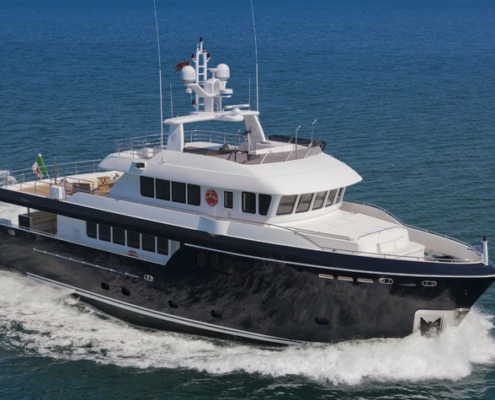
And Heesen (yes, that’s her Long Island Yachts 28 Sportsman tender alongside):

The Fog Warning Blog and Podcast is going to spend the coming months exploring this world, and I hope you enjoy the ride. Maybe you can tell that I’m taking the lack of authenticity in this sector a little ….. personally. Sure, I could probably lighten up a little. But to me, if a client is going to spend $5m, $10m, or far more on a true ocean-going vessel, it’s because they want the challenge of rounding Capes – not puttering though canals. They don’t need slick marketing or magazine cover shots, convenient labels or copycat builders. In my humble opinion what they need is:
- A ship, not a boat.
- And that ship should be built in a shipyard, not a boatyard.
- And it should be a Dutch ship, or one that aspires to that level.
And, if they’re going Dutch, I want them to take a very close look at my Dutch ships. Those built by the shipyard of Hartman Yachts:
What can I say? I’m a true believer. Why? I’ll leave that to Dizzy Dean again…
“It ain’t boasting if’n you kin do it!”
As always, thanks for listening. And launch a flare if I can help with anything along the way.
Big Wave Dave
